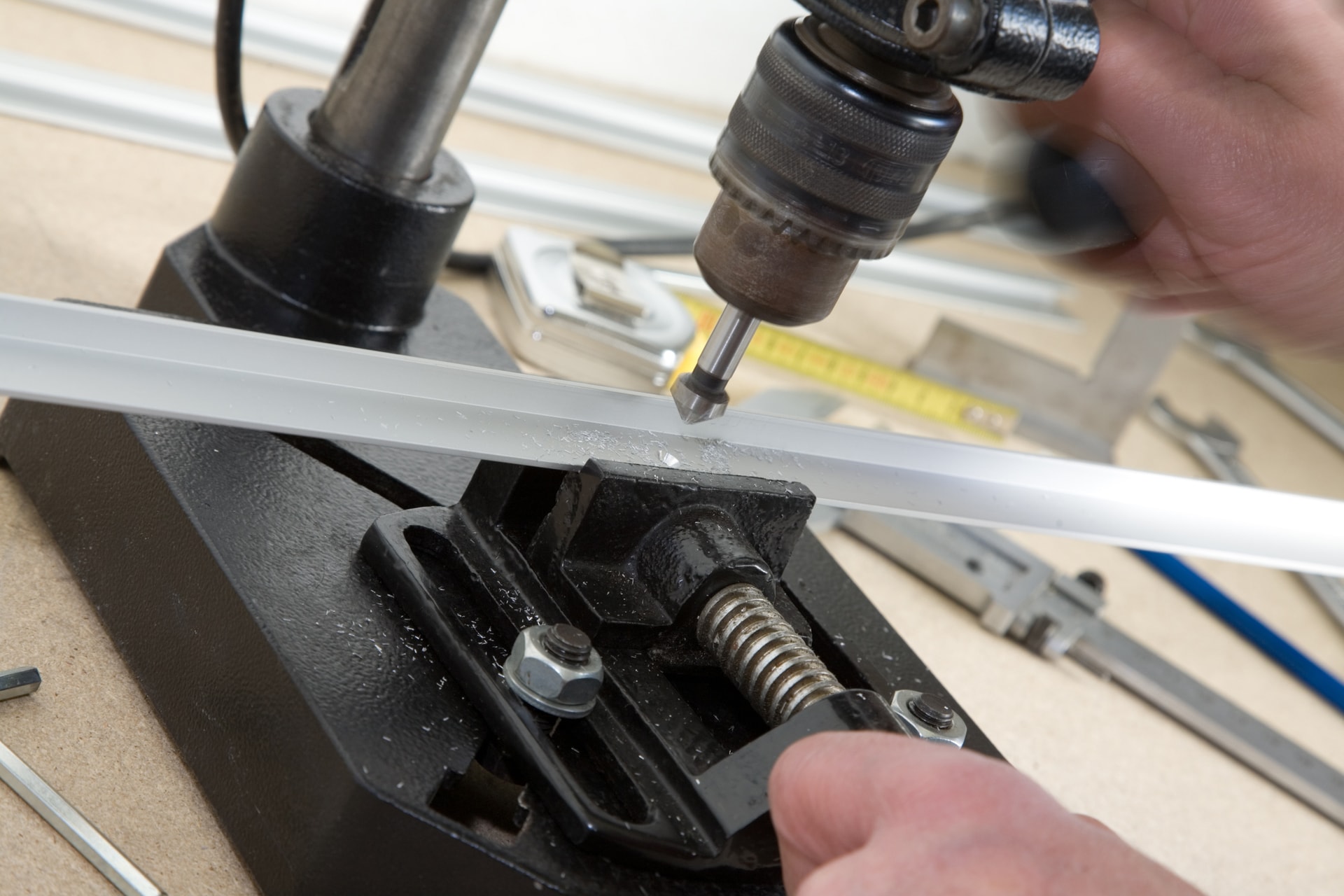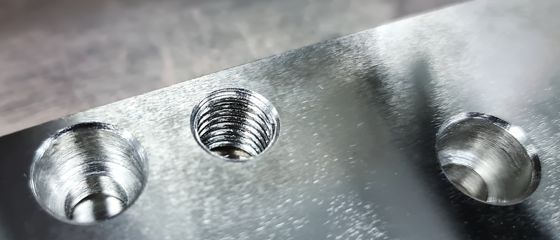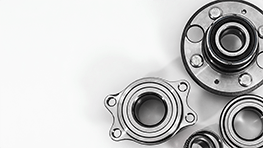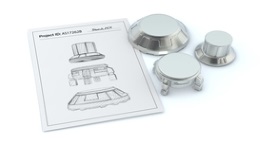Countersinking
eMachineShop has a variety of countersink tooling to complement our full range of CNC machining equipment.
- 50+ Materials.
- FREE Shipping in the USA.
- 100% Quality Guaranteed.

Understanding Countersinking in CNC Machining
eMachineShop specializes in providing top-notch CNC countersinking services. Our expertise in various threading types and countersinking angles, coupled with our state-of-the-art equipment, ensures the highest quality and precision in every project. Contact us for your custom countersinking needs.
Countersinking is typically performed using a conical-shaped cutting tool called a countersink. This tool creates a tapered surface at the mouth of a hole. The primary purpose is to ensure a flat seating for screw heads, preventing them from protruding above the surface of the material. This technique not only enhances the aesthetic appeal but also ensures safety and functionality, especially in parts where a protruding screw head can cause interference.

What is Countersinking?
Countersinking is a machining process used to create a conical hole at the top of a pre-drilled hole. This conical hole is designed to allow the head of a flat or countersunk screw to sit flush with or below the surface of the material. The process involves a special tool known as a countersink, which is essentially a cone-shaped cutting tool that cuts into the material. This tool creates a tapered surface at the mouth of a hole, enlarging the top part of the hole to the required diameter and angle.Key Characteristics of Countersinking
- Shape and Size: The conical shape matches the angled profile of countersunk screw heads, ensuring a precise fit. Standardly, this is determined by the Inner and Outer Hole Diameters of the hole.
- Depth and Angle: The depth and angle of the countersink are crucial and must align with the screw specifications. Typically screw head angles range from 82 to 100 degrees. While the depth is normally proportional to the inner and outer hole diameters.
- Finish: A well-executed countersink offers a smooth surface finish, but the deburring process may generate some unwanted debris which will need to be removed.
Design Consideration for Sheet Metal Applications
Major Hole Size: Also, known as the Outside Diameter, this refers to the larger hole that accommodates the head of the fastener (like a screw or bolt). The major hole must be large enough to allow the entire head of the fastener to sit flush with or below the surface of the metal sheet. Its diameter is typically a bit larger than the widest part of the fastener head.
Minor Hole Size: This is the smaller hole that the threaded part of the fastener goes through, which is also referred to as the Inner Diameter. The diameter of the minor hole is usually slightly larger than the outer diameter of the screw threads. This ensures a snug fit without being too tight, allowing for thermal expansion or contraction and easy assembly.
Typically the general rule of thumb is that the Major Hole Size is 50% larger than the Minor Hole Size. So an easy way to calculate for Major Hole Size is: Minor Hole Size x 1.5 = Major Hole Size. eMachineShop CAD uses a 1.57 multiplier to accommodate for machinability tolerances.
Countersink Angle: The angle of the countersink needs to match the angle of the fastener head. Common angles include 82 degrees and 90 degrees, though others are used depending on the fastener type, such as 90 and 100 degrees. The countersink angle ensures that the fastener head sits perfectly in the countersunk hole.
Depth of Countersink: The depth of the countersink must be sufficient to allow the entire head of the fastener to sit flush with or below the metal surface. This depth is dependent on the size and shape of the fastener head. However, if the depth is over roughly 60% of the material thickness, then it poses a risk of hindering the structural integrity of the part at that point.
Countersinking in Relation to Threading and Tapping

Integration of Components in Design:
Complementary Functions: Countersinking and threading/tapping are often employed together in designs where it’s crucial for screws or bolts to sit flush with the material’s surface. For example, in designs requiring a bolt to be flush-mounted, the hole is first countersunk and then tapped to accommodate threading.
Aesthetic and Functional Synergy: This combination of techniques not only enhances the aesthetic appeal by creating a smooth, flat surface but also ensures functional integrity. Countersinking provides a seamless finish, while threading/tapping offers the necessary grip and strength for the fastener to hold securely.
Sequential Processes in Metal Fabrication:
Countersinking First: Typically, the fabrication process begins with countersinking. This step prepares a tapered surface for the screw head, ensuring it doesn’t interfere with subsequent threading or tapping.
Threading/Tapping Second: Following countersinking, the next step involves threading or tapping. Threading involves cutting threads on the exterior of a rod or bolt, whereas tapping refers to forming threads inside a pre-drilled hole. This process is determined by the specific requirements of the project.
Why is Countersinking Prevalent in Manufacturing?
Countersinking is more than just a method to accommodate screw heads. It’s a fundamental process in manufacturing that contributes to the aesthetic, structural, and functional integrity of a wide range of products. Its prevalence is due to its ability to provide a safe, clean, and efficient way to assemble parts across various industries, making it an indispensable technique in modern manufacturing practices.
Aesthetics and Safety: Countersinking allows for a cleaner and more professional finish. By ensuring that screw heads do not protrude, it also eliminates potential safety hazards, such as snagging or scratching.
Enhanced Durability: Proper countersinking can distribute the load of the screw head more evenly across the material, reducing stress points and enhancing the durability of the assembly.
Precision and Consistency: In precision engineering, such as aerospace or automotive manufacturing, the consistent and precise nature of CNC-machined countersinks is crucial for maintaining high-quality standards.
Versatility Across Materials: This process is applicable to a wide range of materials including metals, plastics, and composites. This versatility makes it a go-to choice for diverse industries.
Structural Integrity: In applications where surface flatness is crucial, such as in the assembly of mechanical parts, countersinking is essential. It ensures that no part of the screw interferes with the part’s function or causes unevenness.
Improved Load Distribution: A well-countersunk screw spreads the load over a larger area, reducing the likelihood of material splitting, especially in brittle materials like wood or certain plastics.
Compatibility with Automated Assembly: In modern manufacturing, where automated assembly lines are common, countersinking facilitates easier and more reliable screw insertion, streamlining the assembly process.
Customization and Flexibility: Countersinking can be customized to fit various screw sizes and types, making it a flexible process that can be adapted to specific design requirements.
Machining Process
In a custom CNC (Computer Numerical Control) machine shop, countersinking is executed with precision and consistency. The process involves programming the CNC machine to control the countersink tool’s speed, depth, and angle. The tool is guided to the predetermined location, and it rotates and moves vertically into the material to create the tapered hole. Advanced CNC machines allow for rapid and precise countersinking on various materials, including metals, plastics, and composites.
Design Considerations
When designing for countersinking, several factors must be taken into account:
- Screw Type: The countersink must match the angle and diameter of the screw head.
- Depth and Diameter: Precise measurements are crucial to ensure the screw head sits perfectly flush.
- Surface Finish: A high-quality surface finish is vital for both aesthetic and functional reasons.
Expanded Design Considerations for Countersinking
- Hardness and Machinability: Harder materials may require slower cutting speeds and specialized countersink tools to avoid damage.
- Thermal Properties: Some materials might deform due to heat generated during machining. This factor influences the choice of cutting speed and tool material.
- Head Shape and Size: The countersink angle must match the screw head angle, which typically ranges from 82 to 100 degrees.
- Thread Type: Coarse or fine threads might affect the depth and diameter of the countersink to ensure proper grip.
Common Mistakes in Designs with Countersinking
Designing custom CNC parts with countersinking features requires attention to detail and a good understanding of both the machining process and the end-use of the part. There are several common mistakes that can occur during this process, which can affect the functionality, aesthetics, or structural integrity of the part. Here are some of the most prevalent errors:
Typical Applications
Countersinking finds its application in numerous industries. Some of the common applications include:
- Aerospace: For flush rivet and screw fittings in aircraft skins, ensuring aerodynamic surfaces.
- Automotive: Utilized in car panels and frame assemblies, enhancing structural integrity and aesthetics.
- Electronics: Essential in circuit board assemblies where a flat surface is crucial for component alignment and soldering.
- Construction: Integral in decking and framing applications where exposed screw heads are undesirable, ensuring a smooth and safe finish.




